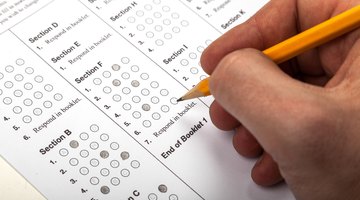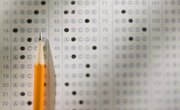The education process is very much a cycle: a process between teacher and student that is continually moving. The education cycle focuses on planning, delivery and assessment, in which both teacher and student are continually assessing whether or not the content and delivery was successful. For the teacher, it is important to determine if the students received the information, retained it and were able to process it. For students, the process often involves making the determination if the content was effectively presented and whether or not the information was retained. Also, results of an assessment often give students critical information like ranking, overall performance and whether or not specific criteria were met in order to pass on to the next class.
For both students and teachers, often the main tool used to determine the effectiveness of instruction is the test instrument. Teachers use the test to determine if the content was presented effectively, and students use the test to determine if they understood the content and, sometimes more importantly to the students, if they passed the class.
Different Tests Measure Different Things
It’s important to understand that within the scope of all test instruments, there is a vast array of differences and not all tests measure the same things. There are important differences between teacher-made tests vs. standardized tests. Additionally, there are differences within standardized tests. The differences often have to do with how the scores may be interpreted. Therefore, it is critically important to understand what a test actually measures (and what it doesn’t) so that when compared, similar measurements are used. It is also important for test takers to understand the types of tests and what their individual scores actually mean. Lastly, it is important for teachers and test takers to understand that there are many advantages and disadvantages to both teacher-made tests and standardized tests.
What Are Classroom Tests and Standardized Achievement Tests?
Classroom tests, also referred to as teacher-made tests, play a vital role in classroom assessments. These types of assessments are considered nonstandardized tests. Classroom assessments help determine if students mastered content. For most students, the grade on the test is important because it may determine if they pass or fail. Doing well on classroom assessments indicates mastery of content and also helps build student confidence along the way. Classroom assessments also give important insights to the instructor. For example, if a large majority of students miss a question or questions on a test, this signals to the instructor that students possibly needed more time or more clarification on that topic.
Classroom tests, or teacher-made tests, may be a combination of multiple choice, true/false, short answer or essay questions. The content of the test should be directly related to the content delivered and discussed in the class. It may also cover the content in textbook readings or articles shared with the class. The content for classroom assessments is directly related to the specific content taught in the class. The assessment may also require students to apply or explain what they have learned, as in an essay question or performance assessment.
However, there are differences between teacher-made tests and standardized tests. When you think of teacher-made tests versus standardized tests, it's important to understand the differences between the type of assessment and what they each measure. Classroom, or teacher-made tests, are not standardized and therefore may be open to broader interpretation. Additionally, teacher-made tests often assess very specific content or skills often associated with a unit of study. It is important to understand that there are advantages and disadvantages of nonstandardized tests.
In contrast to classroom tests, a standardized test is by definition standardized. A standardized test includes the same format, the same types of questions and the same content no matter when or where the test is administered and no matter who is taking the test. Questions may be multiple choice, true/false or short answer, and it is administered either by paper and pencil or on a computer. Additionally, standardized tests tend to measure a broader range of knowledge and skills. Examples of standardized tests used for undergraduate acceptance include the SAT and ACT. Standardized tests often used for acceptance into graduate school include the LSAT, MCAT and GRE.
What Are Norm-Referenced and Criterion-Referenced Tests?
Within the set of standardized tests, it is important to understand that there is a difference between norm-referenced and criterion-referenced tests. While both are still standardized, norm-referenced tests measure and rank test takers to each other. A test taker’s score is compared to the norm of similar test takers and may be expressed as a percentile, grade equivalent or stanine. Criterion-referenced tests measure the number of correct responses based on a specific criterion of what is expected to pass the exam or what is acceptable achievement. A criterion-referenced test score may be expressed in a percentage correct out of the total.
The two types of tests each serve a different purpose and the scores are used differently. Schools and teachers may use norm-referenced test scores to rank student achievement across broad areas of knowledge. Criterion-referenced scores may be used to determine if a student has mastered specific skills or concepts in specific areas of study.
Why Teachers Use Classroom and Standardized Achievement Tests
Classroom teachers may use tests for a variety of reasons. Most notably, a well-constructed teacher-made test will inform the teacher if students mastered the content taught in class. Classroom tests can be summative, in which the assessment comes at the end of a unit of study and encompasses all of the content covered in class. Think of this as a final exam. Additionally, teachers may conduct smaller formative assessments, in which a small amount of material is covered. A formative assessment is used by the teacher to determine if the class is ready to move on to the next phase of content. The results of formative assessments should inform the teacher of the next instructional steps.
Standardized tests, however, are used for very different reasons. Norm-referenced standardized tests are often used to rank students across a broad range of knowledge. Universities and colleges often use these test scores because of the ability to rank students to see how they compare to other test takers. When colleges and universities are looking for the top-performing students, these standardized test scores will illuminate the top performers. Since criterion-referenced standardized tests are designed to determine how much a student knows or if a student has mastered a specific skill set, these tests would be used to determine if a student can move on to the next grade level. In this case, the scores on a criterion-referenced test are not compared to other test takers. The performance of other test takers in this case is irrelevant; the focus is simply on the performance of each individual test taker.
Differences Between Standardized and Nonstandardized Tests
Whether norm-referenced or criterion-referenced, there are differences between standardized and nonstandardized tests. Both norm-referenced and criterion-referenced tests share the common characteristic of being measurable and quantifiable. Scores from standardized tests are quantifiable and are resulted in a numeric measure, often a percentile, percentage or grade equivalent. Nonstandardized assessments, however, are not quantifiable in the same way. Some examples of nonstandardized assessments include portfolios, observations or checklists. Often, these types of performance-based assessments are graded using a rubric. Nonstandardized assessments are usually less structured and more organic.
Both standardized and nonstandardized assessments play an important role in education. However, they are used in very different ways. While standardized assessments are used to rank students or determine individual student performance, nonstandardized assessments may be used to determine a student’s strengths or to highlight a particular skill. While a rubric may give some structure to this type of assessment, portfolios and performance assessments typically allow for high levels of student input and creativity. While these assessments are important in creating a holistic look at a student’s overall performance, it can’t necessarily be used in the same way as standardized assessments.
Advantages and Disadvantages of Standardized Tests
Standardized testing has been under fire recently by many who object to this type of testing for students. While opponents list several reasons why testing should be stopped, there is an equally long list of reasons why testing is still supported by schools and educators across the nation. Essentially, there are advantages and disadvantages of standardized tests. First, standardized testing provides an objective and reliable measure of student ability and achievement. These tests have undergone such a strict norming process that the results are statistically reliable and valid. Additionally, this form of measurement has increased accountability for many schools, requiring them to set rigorous yet attainable goals for long-term student success. As a result, many schools have made significant and sustainable gains in overall student achievement.
Because of the standardized nature of these tests, they are highly inclusive. A higher proportion of students with disabilities are taking standardized tests today than ever before, furthering inclusive practices for students of all abilities. The high-stakes nature of these tests has improved the focus and quality of the necessary skills being taught for students to be successful at the college level and beyond.
However, one main drawback of standardized tests is that not all students are successful at scoring well on them. For some students, this type of assessment does not accurately reflect their true abilities, which certainly can cause added stress and struggle for students. Opponents feel that standardized tests focus so narrowly on a few skills that they do not provide a true reflection of overall student achievement and should not be a central factor in the education process. Some suggest that the narrowing of the curriculum has actually lessened student preparation for college and career readiness. Essentially, opponents feel that there is too much emphasis and focus placed on the test.
Why Are Tests Important?
Assessment is a critical part of the teaching and learning cycle. Assessments provide an opportunity for students to demonstrate their understanding of material. It is also important to determine if mastery of standards for specific content has been met. For educators, assessment results help drive instruction and guide decisions about overall content. Additionally, assessments help highlight student performance. For high-scoring students, test results are critical for highlighting exceptional performance. The ability for test scores to set one test taker apart from all other test takers can be highly valuable for some students.
As with many things in education, there isn’t usually a one-size-fits-all when it comes to assessment. As students are multifaceted, so are the assessments available to them. It is important to remember that different forms of assessments are good for some things and not others, and there are strengths and weaknesses as well. Therefore, it’s important not to focus too much on any one specific test. While colleges and universities do look at test scores, they often look at other assessments too. Find the tests on which you do well and focus on those. If there is a certain test on which you don’t do well, be sure to include other stand-out assessments such as written essays, portfolios or interviews to balance out the overall picture of your abilities. A combination of assessment results will provide a clear, multifaceted picture of you as an individual student.
Related Articles
References
Writer Bio
Melanie Forstall has a doctorate in education and has worked in the field of education for over 20 years. She has been a teacher, grant writer, program director, and higher education instructor. She is a freelance writer specializing in education, and education related content. She writes for We Are Teachers, School Leaders Now, Classroom, Pocket Sense, local parenting magazines, and other professional academic outlets. Additionally, she has co-authored book chapters specializing in providing services for students with disabilities.











